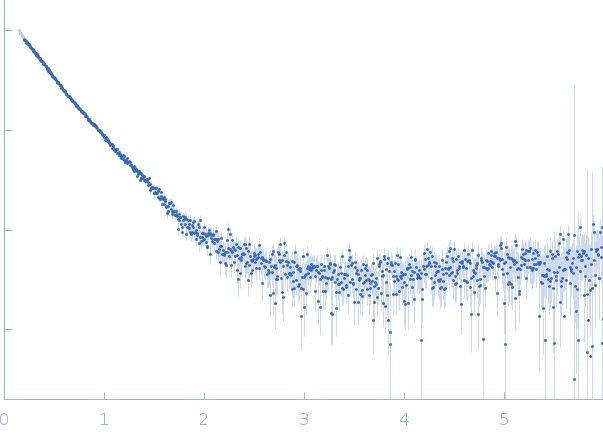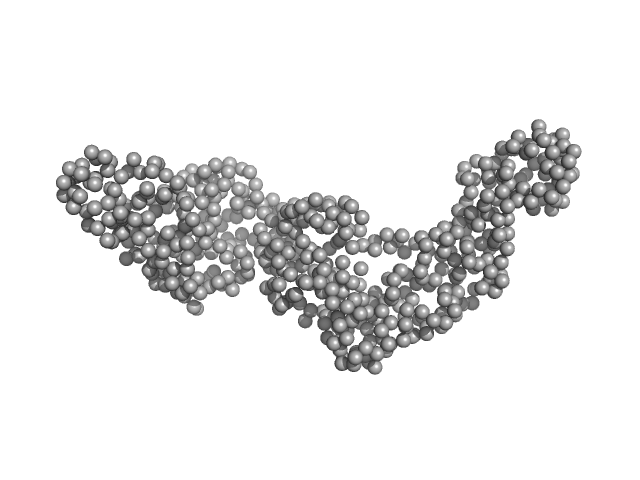|
SAXS data from solutions of Bep1 in 25 mM Hepes, 300 mM NaCl, 1 mM TCEP, 5% v/v glycerol, pH 7.5 were collected using Xenocs Xeuss 2.0 Q-Xoom instrument (Center for Structural Studies, Heinrich-Heine-University, Düsseldorf, Germany) equipped with a Pilatus3 R 300K detector at a sample-detector distance of 0.6 m and at a wavelength of λ = 0.154 nm (I(s) vs s, where s = 4πsinθ/λ, and 2θ is the scattering angle). One solute concentration of 12.00 mg/ml was measured at 15°C. 30 successive 600 second frames were collected. The data were normalized to the intensity of the transmitted beam and radially averaged; the scattering of the solvent-blank was subtracted.
|
|
 s, nm-1
s, nm-1
